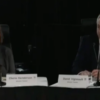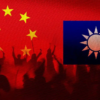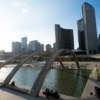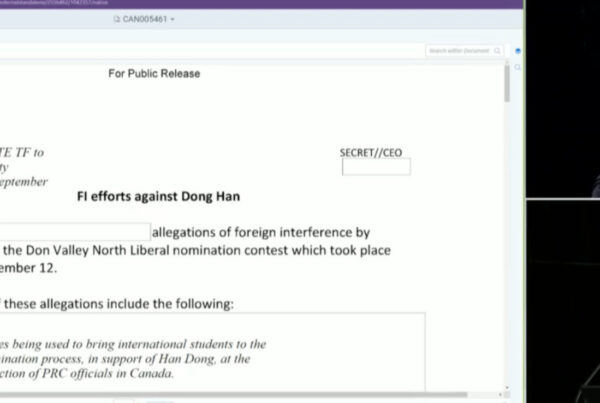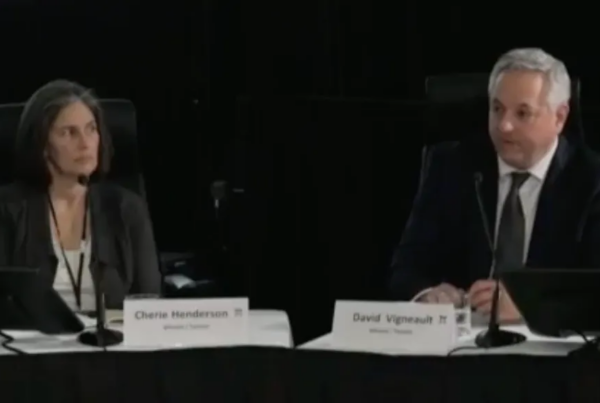Introduction
The fundamentalist Islamic regime controlling Iran continues to develop and employ an extensive structure of oppression thirty-five years after the Khomeini Revolution. The government has engineered its version of an Islamic society through strict ideological and economic controls. The ruling mullah cabal uses widespread propaganda to exploit the people’s faith and piety, and ruthless violence to intimidate and suppress any dissenters. These totalitarian tactics have thus far succeeded in maintaining the regime’s power base. The mullahs and their puppet government perpetuate a stunted political and social order reminiscent of the medieval Caliphate they idealize.
However, disheartening realizations about the revolution’s harmful effects have slowly eroded the favor of citizens that had previously served and defended the regime. The Khomeinists that seized power in the name of the so-called “dispossessed” have lost credibility and popular support. This disillusioned constituency finally recognizes and decries the deception and false motives used by the revolutionaries to take and maintain control. Worsening social, political, and economic realities have convinced many of them to join a growing opposition movement. The scope and depth of this opposition alarmed the regime and its loyalists during the 2009 post-election demonstrations.
These demonstrations and the regime’s brutal reprisals revealed the Islamic Republic’s deep divisions to the international community. Iran still suffers from persistent internal political power struggles. The inept economic policies and the rampant corruption have left the country in financial shambles. As the country stumbles from one figurehead president to the next, the people continue to languish in economic despair. The per capita income has settled at one quarter of what it was before the revolution. [1] The gap between the rich and poor has greatly widened, practically destroying the middle-class.
The regime wages disinformation and morality campaigns, which primarily target women and youth, to suppress key elements of the opposition. However, these efforts have produced the opposite intended result. Rather than passively accepting dismal conditions, common people now increasingly express their rage and desperation. The regime’s strategy to push women back into the home in order to reestablish an archaic gender order has backfired. Rather than subduing the upstart feminists, the effort has instead spurred a remarkable increase in gender-awareness and dissent among women of all social classes. In addition, the regime and ruling class now face a formidable challenge from Iranian youth who constitute a little under 70% of the Iranian population is under 35. [2] The revolutionaries of the 1970s have reached middle age, and their children hold strikingly different social and political outlooks. As the first generation born and raised under Khomeinist rule, the youth in Iran oppose the very political and moral restrictions imposed on them by the clerics.
Unyielding political oppression, imprisonment, torture, and executions have become part of Iranian daily life.[3] The not-so-secret series of assassinations of prominent intellectuals, patriotic leaders, and iconic opposition figures has also affected the average Iranian. Ordinary citizens now widely believe that the regime claiming to represent them instead views them as disdainful subjects to be exploited. The embittered public remembers the revolution’s dashed hopes, and seizes every opportunity to protest the political system that abused their fervor and trust. Iranian voters have repeatedly expressed their resentment toward the regime by voting against the fundamentalists’ favorite candidates in parliamentary and presidential elections.
Unfortunately, the regime remains uncompromising in the face of these challenges. In addition, the persistent outcries of the courageous Iranian people have been ignored by the world at large, achieving no lasting and cumulative effect. The populist movement toward self-determination, aimed at establishing a democratic system featuring the separation of religion and politics, falters for lack of outside succor. Without the attention and support of major Western powers and international organizations, political change remains out of reach.
Section 1: Drugs and the Iranian regime
Iran’s oppressive regime incites much of the social ills that beset the nation and its people through repressive policies that severely restrict civil liberties. Seeking to escape from the despair, a growing number of Iranians find refuge in dangerous, addictive drugs. At the same time, the regime’s heavy-handed response to this crisis actually further aggravates the situation. The regime has nominally implemented harsh prohibitions against drug use and trafficking, however, elements of the regime have actually assumed operational control over the vast majority of the illicit narcotics traded in Iran and throughout global distribution networks. The combined effects of these harsh policies and the duplicitous double-dealing have suppressed the economy, the arts, and the societal well-being of a formerly vibrant industrious nation.
In Islam, drinking alcohol is forbidden or haram. Instead, drugs—and especially opium and its derivatives—are cheap, strong, and readily available. According to Iran’s own figures, two million Iranians out of a population of 75 million are addicted.[4] In fact, most experts agree that the real figure is much higher. [5] In any case, it is believed that Iran has the world’s highest rate of drug addiction per capita. [6]
The cheapness of the drugs compound the general dismay of the people and fosters an atmosphere of desperate escapism. Supplementing this dangerous condition is the abundance of harmful drugs available to meet a rising demand. Iran shares a 936 kilometer border with Afghanistan, the world’s biggest opium producer. Eighty percent of the world’s opium is produced in Afghanistan, where much of the material for shipment to Europe passes through Iran [7]; this geography facilitates the Iranian addiction problem, but it is not the reason for it.
Like most modern epidemics, Iran’s drug problems are centered in major urban areas. The capitol city, Tehran, has a population of more than 12 million, and a corresponding share of the city’s hardships. Tehran has become a locus of the drug scene in Iran. ‘Crack’ is Iran’s own heroin derivative, which is very cheap and extremely addictive, has permeated the poor of Iran’s urban life. Sheesheh (meaning ‘glass’ in Farsi), which is a homemade crystal meth, is also a cheap drug cheap and easily accessible by the poor. Courses for teaching people to produce crystal meth at home are said to go for as little as 2-3 hundred thousand Tomans ($80-120 USD).[8] Darvaazeh Ghaar, south Tehran’s rambling bazaar district, is one of the hardest hit areas of the capital. The squalid Shaheed Harandi Park, [9] which borders on a pond, is the main gathering place for both men and women, addicts of all ages who cluster together, publically smoking meth out of glass pipes and injecting crack/heroin.
The roots of this deplorable state of affairs lies in the complex and profound disillusionment that the Iranian people now feel towards their Revolutionary masters. Before the Islamic Revolution, the rate of addiction was estimated to be anywhere between fifty and one hundred thousand [10] out of the 35 million population of Iran. In order to ease the process of rehabilitation, the policy at the time for combatting addiction allowed for a specified quota of opium rations to be distributed among people over 50. [11] The centers provided outpatient methadone syrup for young and middle-aged addicts and drug treatment and rehabilitation was readily available. After the Revolution, the outlook and handling of addicts and addiction changed, and addictive drug use was regarded as a crime. This led to the closure of drug addiction and rehab treatment centers and addicts were forcibly sent to camps.[12]
Iran’s totalitarian oligarchy greatly augments and contributes to a massive and growing drug epidemic, despite its strict anti-drug policies. Essentially, there are three primary aspects of the regime’s deceitful approach to managing the drug problem. First, they deny the scope, scale, and severity of the problem. Second, out of paranoid fear of the ‘subversive’ effects of drug treatment programs, they hamper and discontinue these programs and persecute the medical professionals administering the programs. Lastly, the hypocritical and destructive involvement of regime elements in the drug trade not only expands and exacerbates the problem, but also demoralizes the people through its shameless immorality. In short, the corrupt regime operates both the drug trafficking as well as the drug enforcement.
The Iranian regime’s malfeasance begins with stubborn denials of the scope, scale, and severity of the drug addiction crisis. This is evident in the official government statistics that greatly understate the problem. Most experts agree that the true numbers portray a much bleaker picture. Despite its denial, the regime has made several visible efforts to curb the burgeoning dilemma. A recent article in the Al-Monitor by Bijan Khajehpour tried to shore up some hope in Rouhani’s campaign promise to deal with the drug problem in Iran:
“The latest statistics in this field were presented during a conference in Ahwaz by the director-general of the office for research and training affiliated with the Iran Drug Control Program, Hamid Serami. In an unusually transparent presentation, Serami outlined the following statistics: Some 1.325 million registered drug addicts are in Iran, excluding those who consume drugs occasionally or those who have opted not to register with any of the existing programs. Of these addicts, 58% are younger than 34, 9% are women and 22% have higher education. As a result, some 10 million Iranians (direct relatives of the addicts) have to struggle with the consequences of drug addiction. Serami also outlined that drug addiction has killed an average of seven people per day over the past two decades and is the second leading cause of death in the country after road and traffic accidents.
Unofficial estimates put the number of hard-core addicts higher (up to 4 million), but the total number will always be a guess in a society like Iran. However, it is significant that state officials have started discussing the drug-addiction trends in society.” [13]
Khajehpour also admits:
“It should be noted that drug addicts are not treated as criminals and that the government perceives them as ill citizens who need professional treatment. The above statistics indicate that Iran’s harsh treatment of drug traffickers (including capital punishment for major traffickers) has not managed to contain the problem.” [14]
Khajehpour further states, “Other realities that have certainly contributed to the scale of the problem are economic issues such as poverty and youth unemployment.” [15] Then he goes in for the hard sell:
“The total cost of this phenomenon to the Iranian economy is estimated to be $10 billion annually, considering that Iran runs a massive anti-drug campaign including methadone clinics, state-sponsored detoxification and rehabilitation centers, and needle-exchange programs. There are also a large number of non-governmental organizations (NGOs) that are designed to help reduce the addiction problem through professional treatments, often in collaboration with international organizations. International observers have commented that Iran’s drug treatment programs are among the world’s most progressive; however, the challenge is so huge that an improvement in addiction rates has not been felt yet.” [16]
Nonetheless, the article closes on this unexpected optimistic note:
“Evidently, any campaign trying to address such a huge challenge will have its flaws and bottlenecks. However, the decision of the new government to empower the civil sector and to work for more transparency on the scale of the issue will ease the current impact of the problem. In addition, the government’s growing attention to job creation as a main priority in addressing socio-economic challenges will also have a positive impact on the addiction problem.” [17]
While laying out the seriously grim realities of this epidemic, the writer insists that Rouhani can and will address the contradictory nature of Iran’s drug racket. However, in the face of denial, the government has closed many treatment centers, hampering efforts to deal with drug addiction. Even worse, the regime has persecuted several leading drug treatment experts, further handicapping the effectiveness of national drug treatment.
In 2000, a comprehensive program, the Triangular Clinics program, developed by the Ministry of Health and Welfare, was launched to reduce the damage of drug addiction. [18] Triangular Clinics in Iran train, counsel, teach prevention, offer counseling and treatment, offered methadone replacement treatments, free needle distribution, training for the prevention of blood borne diseases, and voluntary HIV testing. The clinic also provides HIV counseling and therapy, counseling and treatment for sexually transmitted diseases (other than HIV). Brothers and Doctors Kamiar and Arash Alaie [19] were the founders of these clinics. However, in June 2008, the brothers were arrested and charged with “a conspiracy to overthrow the Iranian regime,” among other trumped up charges. Following a secret, one-day trial in December 2008, the Alaei brothers were sent to Tehran’s notorious Evin prison. In December 2010 and August 2011, they were respectively released and they fled Iran for the United States. [20]
In the early years, the clinics provided valuable—albeit limited—services. However, the Iranian regime admonished these assistance groups because of their association with undesirable members of society (drug addicts, sex workers, members of the LGBT, etc.). The positive international attention and praise that the organization and brothers received was also perceived as a subversion of the regime’s power. Consequently, the quality of care the Triangular Clinics, and other similar programs, offered declined as a result of the regime’s admonishment. The regime’s selective handling of the drug issue is disproportionately comminatory towards perceived abusers. The harsh government response not only fails to lessen the problems caused by widespread drug addiction, it also masks the true source of the problem in Iran: the government’s involvement and perpetuation in the criminal drug trade. Thus, while nominally imposing harsh sentences on drug offenders, the regime diabolically facilitates and furthers the drug epidemic plaguing the beleaguered country.
Despite the terrors unleashed on the civilian populace, there are many apparently beneficial aspects to Iran’s stringent enforcement of drug laws. First, this approach garners much international acclaim and monetary support for Iran. The United Nations Office on Drugs and Crime (UNODC) 2013 World Drug Report [21] confirms the Iranian regime’s claims of their willingness to cooperate and respond. On this topic The New York Times confidently described the regime in Tehran as the, “West’s stalwart ally in the War on Drugs.” [22]
According to a report compiled by Human Rights Watch in 2012 [23] from 2000-2009 the UK Foreign and Commonwealth Office provided Iran with more $4.7 million USD for counter-narcotics assistance programs. From 2007-2011:
“Belgium, France, Ireland, Japan, and the United Kingdom provided $3.4 million USD through UNODC [United Nations Office on Drugs and Crime] to establish border liaison offices as well as for body scanners and sniffer dogs to be used at checkpoints, major airports, and the Iran-Afghanistan border.” [24]
The European commission, European Union member states, and several other governments including Japan, Norway, Australia, and Canada, provide money, technical assistance, and legislative support to Iran under the program.
Sadly, the positive international recognition helps delude the United Nations and important non-governmental organizations (NGOs) about Iran’s true nature. The Iranian regime has managed to gaslight many international organizations. In 2011, Yuri Fedotov, executive director of the UN Office on Drugs and Crime praised Iran in a speech in Vienna [25] in which he claimed that “the Islamic Republic of Iran has put in place one of the world’s strongest counter-narcotics responses. Its counter-narcotics efforts, good practices, and concerns deserve the acknowledgement of the international community.” [26] However, weeks prior to Fedotov’s speech, the Iranian regime executed thirteen people in Mashhad’s notorious Vakeel-Abad prison, accusing them of drug trafficking. The Iranian regime continues to execute people by the hundreds accusing them of ‘drug trafficking.’
One example is the Iranian-Dutch political activist, Zahra Bahrami, who was arrested for participating in the 2009 anti-regime post-election demonstrations. [27] Although Bahrami’s original charges derived from her association with political organizations, as well as the fact that she had no history of drugs, she was falsely charged with drug trafficking. After months of imprisonment, torture, and rape was executed despite repeated objections from the Dutch government. [28]
Iran’s harsh drug laws and ruthless enforcement actually serve to provide political cover for the regime’s brutal suppression of dissent. Moreover, these laws enable the regime to maintain totalitarian control of the country and its people. In 2011, the Iranian judiciary divulged new plans to intensify prosecutions for drug crimes. They amended the anti-narcotics laws, which already imposed corporal punishment for light drug felonies and the death penalty for trafficking, possession, sales or barter for a minimum of 5 kilos of opium, 30 grams of heroin or morphine (and recurrent offenses committed for smaller amounts) or the manufacturing of more than 50 grams of synthetic drugs such as crystal meth. [29] Gholam-Hossein Mohseni-Eje’i, Chief Public Prosecutor of the Iranian regime, announced that his office would review some drug-related cases in the interests of expediting them through the Iranian regime’s sharia courts. [30] That meant some death sentences for drug-related crimes were no longer subject to appeal in the Supreme Court.
These draconian measures, many of which violate fundamental rights under international law, initiated a staggering wave of executions. Human Rights Watch believes that many of those executed may have had unfair trials, with little or no legal representation. [31] There is also credible evidence that the authorities executed 25 people for what they claimed to be drug offenses without notifying their families or lawyers.
The accumulated human cost of Iran’s so-called war on drugs lasting many years is staggering though nothing has been acknowledged or said by Fedotov, UNODC, or any other drug agency about the executions that the Iranian regime has carried out. The silence is particularly appalling given the fact that the Iranian regime itself is signatory to United Nations International Covenant on Civil and Political Rights. [33] The UN Human Rights experts have said, “In countries which have not abolished the death penalty, the sentence of death can be imposed only for the most serious crimes, which do not include drug crimes. Cases that do not meet these standards are tantamount to arbitrary executions.” [34]
The UN’s own Human Rights Commission has specified that applying the death penalty for drug offenses is a violation of international law. Various Human Rights groups have also raised serious concerns over this. In October 2012, the Iran Human Rights Documentation Center issued a statement calling on the, “UNODC and donor countries to cease funding to Iran for anti-drug trafficking purposes until Iran renounces use of death penalty for drug-related offenses.” [35]
In mid-November 2013, a panel discussion on the topic of drugs and addiction was organized on Iranian state-run TV and consisted of a handpicked group of experts. [36] Interestingly, open discussion on drugs are only now taking place. The first expert, Hamid-Reza Jalaipour, is a Tehran University professor of sociology. During the panel, he commented:
“Sixty percent of prisoners in the Iranian prisons are incarcerated on drug charges, as are most of those who have been executed. All societies deal with the issue of addiction; but the point is that how successful has (the Iranian regime) been in monitoring the situation? Given that there is a direct correlation between unemployment and addiction, your jobless statistics puts the unemployed at 3 to 5 million.” [37]
The second panelist, Commander Ali Mowyedi, head of the ‘police’ narcotics division, added:
“Addiction and drugs in general, given our country’s geographic position is a ‘soft war’ tool. Drugs are one of the three factors that threaten countries and our country’s situation, given our neighboring Afghanistan, we are most susceptible.” [38]
The third panelist, Amir-Hossein Ghazizadeh, is a member of the social commission of the Islamic Parliament of Iran, and professor of medicine at Shaheed Beheshti University. He said, “In the areas that we have touched upon, that operate in a ‘Mafia’ kind of a format, every time we have severed the network, they have sprouted up again; they rebuild their network and once again, it starts to flow.” [39] Ghazizadeh indicated that social issues that affect the psychological wellbeing of individuals can lead to drug abuse.
Babak Deen-Parast, Deputy to the ‘Decrease of Demand of the Drug Combatting Unit,’ offered the last noteworthy comment. He said, “We cannot prevent the distribution of drugs in prisons, such as Evin, even. If we want to deal with the issue of demand within the country, we must prevent seventy million Iranians.” [40] The regime also controls the importing of medical supplies by manipulating its citizens as well as other well-intentioned nations to enrich themselves and maintain power. The Iranian Revolutionary Guard Corps (IRGC) controls and restricts Iran’s pharmaceutical drug market. The importation of foodstuffs and medical products are not subject to the sanctions that have been imposed on Iran,
Besides exploiting the importation of legal pharmaceuticals, the IRGC also delves deeply into illegal international drug trafficking. The IRGC’s involvement with drug trafficking, however, has been reported for years by various Iranian journalists, analysts and former regime authorities who have defected to international media, Western governments, the United Nations, NGO’s and think tanks, all of whom have failed to recognize and respond to the issue. [43]
Hugh Tomlinson of the London newspaper, The Times, finally reported in November 2011, that the Revolutionary Guards are heavily involved in the international drug trade, both directly and via proxies. [44] The report shows that despite the Iranian regime’s claim of zero-tolerance against drug traffickers and users, it is indeed the IRGC whose contrived expression of concern is nothing more than a cover-up to protect its own business and to covertly undermine the West. [45] Former Iranian diplomat, Abolfazl Eslami, who defected to Japan in 2006 and began to expose the Iranian regime says, “The IRGC has been involved in the drug trade for years. The group was motivated by both a desire to fund the militia independently and to destroy the West.” [46] Eslami recounts an incident where he was present at a drug destruction operation carried out in front of United Nations inspectors. Afterward, he asked the IRGC officials if they had really destroyed all the drugs. The IRGC leaders scoffed and replied, “Drugs would destroy the sons and daughters of the West. We should kill them. Their lives are worth less because they are not Muslims.” [47]
“There are several commanders involved in smuggling narcotics. Raw opium or morphine is smuggled in from Afghanistan and developed in labs inside Iran,” [48] Sajjad Haghpanah, a former investigator with the IRGC’s domestic intelligence division, told the Times. Two officials who have been identified by various intelligence organizations were mentioned in the article: Abdollah Araghi, one of the leading commanders of Greater Tehran, and Mohsen Rafighdoost, another high-ranking official within the IRGC. They are known to be well connected to various international crime organizations, long active in the European drug trade. American sources have said that the IRGC organization is expanding into the U.S. and Canada. This affiliation provides the perfect cover for access to sources of financing bypassing international sanctions, as well as to sophisticated operational platforms that support its efforts against the West.
In addition to the connections and cooperation with various international crime syndicates, the IRGC also runs its own production and distribution networks. Huge quantities of raw opium are brought over the border from Afghanistan into Iran and there, in private local labs, it is extracted, refined, and processed into heroin and other opiates. The final product is then shipped over to the West via the extensive IRGC network of distributors who maintain their own forms of transportation and delivery mechanisms.
In October of 2012, one of these drug smuggling networks was exposed by Azeri media that reported that a 22-person gang, also involved in terrorist activities, was actually composed of operatives handled by the IRGC. [49] In 2010, Wikileaks also confirmed such activities by divulging a cable to the U.S. Embassy in Baku that read:
“Iranians’ formal businesses in Azerbaijan include factories, construction companies, trading companies and shops, some of which may be hollow companies hiding illicit or semi-licit activities. Some are also said to be significant actors in obtaining spare parts and equipment for the Revolutionary Guard, raising revenues, and managing money for it and/or regime figures, or managing Iran-origin narcotics trafficking.” [50]
Among the IRGC’s many partners in their drug distribution network are the drug cartels in Latin America, which is among the Iranian regime’s most crucial strategic regions. The Iranian regime has, over the last two decades made hefty investments with dominant regional players such as Venezuela, Ecuador, Bolivia, Nicaragua, and Cuba.
Hezbollah is an exceedingly seasoned actor in all aspects of the international drug trade [51], and its vast involvement with the South American cocaine market is publically discussed in recent years. [52] Hezbollah is the conduit for the initiation and fostering of joint venture contracts with extensive drug cartels in countries like Mexico and Colombia, which transport drugs to the U.S. and other global destinations and launder huge sums of money. According to Michael Braun [53], the former head of the DEA’s operations department, the IRGC (Quds Force and Hezbollah) is deeply involved in the international drug trade, “which provides them with a vast range of operational and tactical opportunities to advance their strategic goals around the world.” [54]
There also are the occasional, unintended confessions of nefarious activities by various regime elite. In May 2006, Mullah Ghorban-Ali Dorri-Najafabadi,[55] Head of the Supreme Administrative Court of the Iranian regime, openly expressed the regime’s support and control of drug smuggling. He spoke during an event and said:
“If Europe takes any action against the Islamic regime, that drug smuggling to Europe, would intensify. Imminent official permit for the transit of drugs from Central Asian countries to Europe via the Iranian air and sea borders. The dispatching of concentrated and pure heroin to European countries in order to avenge the blood of young Muslim martyrs from ‘Sissy’ Europeans youths.” [56]
The newspaper article also wrote, “The explicit wording of the Quran states that if they sting you, sting them back twice. We must always put blasphemers in their place and we should terrorize the young European Sissies as payback for the blood of our Islamic martyrs.” [57]
In addition, in August 2006, Advar News reported that the brother of Mullah Niazi, the State Inspector General and former military prosecutor, was in possession of 95 kilos of opium and 45 kilos of heroin. [58] A day after newspaper, Kayhan—the Supreme Leader’s daily mouthpiece— published a proposal that promoted the idea of permitting the transit of drugs through Iran to Europe [59] as retaliation against European support of U.N. resolution 1696. [60]
A third prime example occurred in January 2014, when Mostafa Pour-Mohammadi, Chief of the General Inspector’s Office, announced that circumvention of sanctions policy has led to an increase in “corruption,” implicitly admitting to the Ministry of Intelligence and Surveillance’s involvement in drug trafficking. [61] During an interview with the weekly Tejaarat’eh Farda (Tomorrow’s Trade) and the conservative website Baaztaab’eh Emrooz (Today’s Echo), Pour-Mohammadi responded to questions regarding the economic activities of the Ministry of Intelligence and Surveillance. At the end of his answer he added
“We cannot reach our goals through wrongdoing. I’m quite certain that there is no benefit in crime; we will not even benefit partially. Experience has showed that crime, either inside or outside (Iran) will not help us achieve our aims. The fact is that the transit of drugs in any form is treason to humanity.” [62]
This is one of the rare instances where a high-ranking official in the Iranian regime’s top apparatus insinuates that there is an implicit transit of drugs approved by the Ministry of Information. For years, the Iranian Revolutionary Guards in Iran, intelligence and police, military, and security institutions of the three European countries involved in drug trafficking purposes.
Through all of these facts, statistics and reports, we see that the regime and its rigid, oppressive rule has created an increasing demand for these dangerous drugs. Even worse, the regime has denied the severity of the epidemic of drug addictions while imposing strict laws and harsh sentences for drug offenders. Moreover, the regime has stifled many worthwhile efforts that effectively combat the growing problem. However, the real malfeasance appears in the regime’s cynical exploitation of the drug trade for its own ends: first, to further choke and suppress any opposition or dissent; and second, to engage in the same illegal activities that it purportedly claims to be combatting.
Section 2: HIV/AIDS in Iran
In Iran, women and girls are most exposed to HIV/AIDS. [63] Researchers and specialists believe that the reasons vary. Based on the most recent statistics and available information of the World Health Organization women are eight times more susceptible to getting HIV even though with proper education and awareness, the disease can be prevented. [64]
Dr. Firooz Arjomandi, a physician specializing in public health believes:
“Women and girls are most exposed to contracting the virus, due to a lack of awareness or attention during sexual contact. Men are the main carriers of the disease and given the fact of women’s’ existing susceptibility, any sexual contact is grounds for the transference of the virus. The Imam Khomeini hospital in Tehran treats many patients who have been driven from family, friends, and society in general, simply because they have HIV/AIDS. The fact is that in Iran, this disease is spread through needle sharing.” [65]
Dr. Hourieh Shamshiri, a physician specializing in women’s surgery and deputy director of the Association of Family Planning in Tehran, is extremely concerned about the susceptibility of women and girls in the face of the HIV/AIDS epidemic in Iran. She agrees with Dr. Arjomandi in his assessment that the


